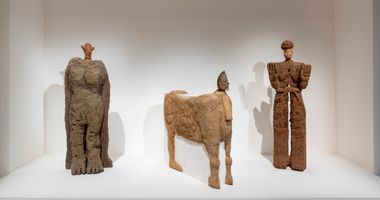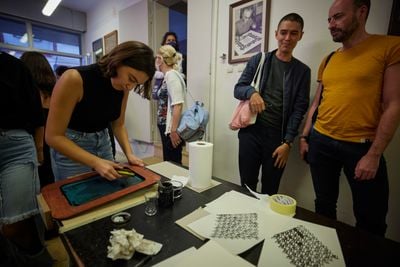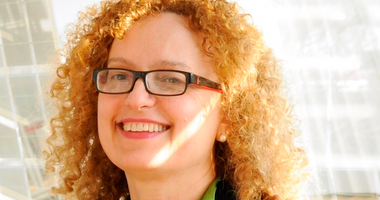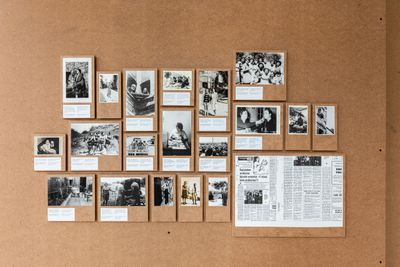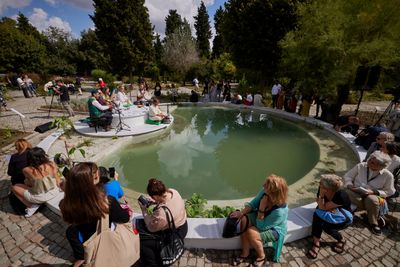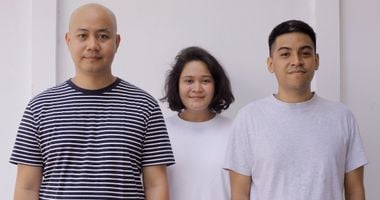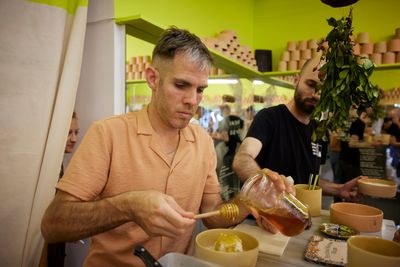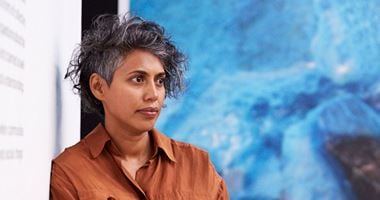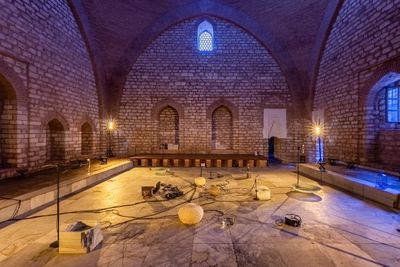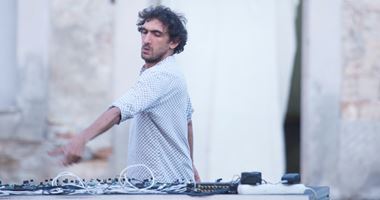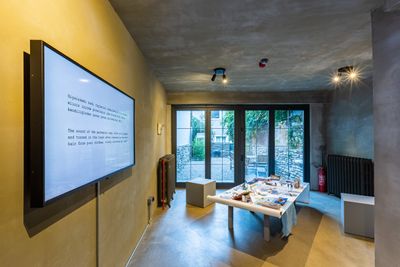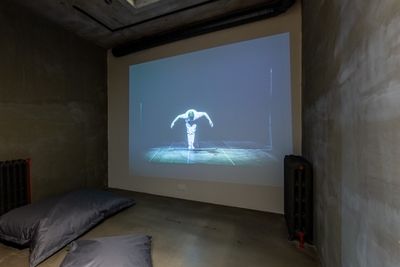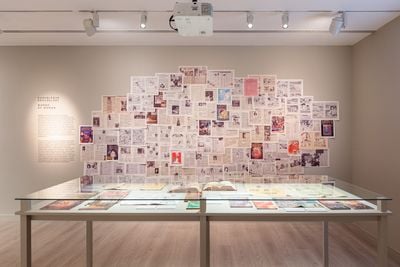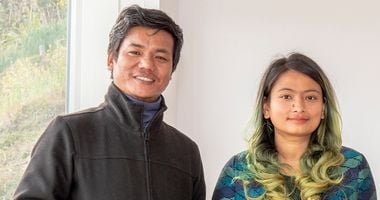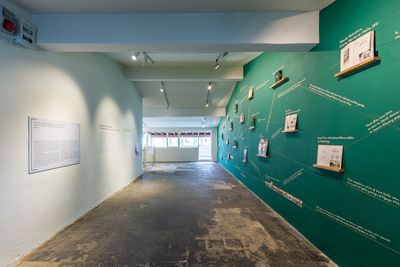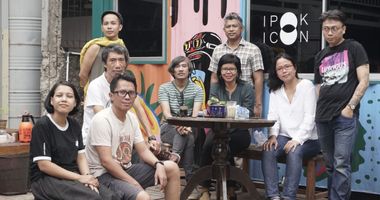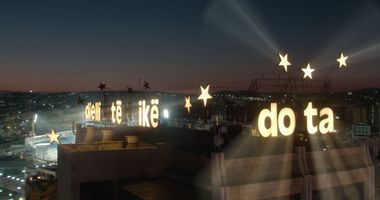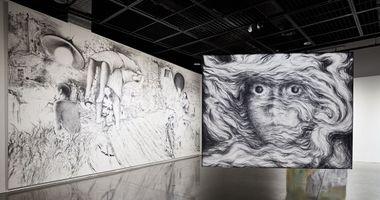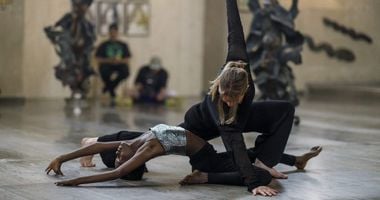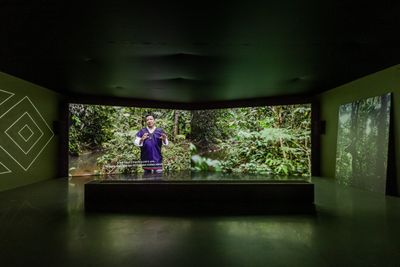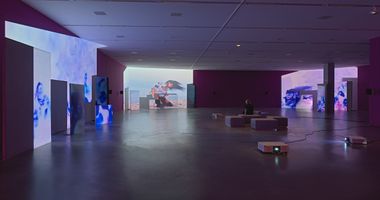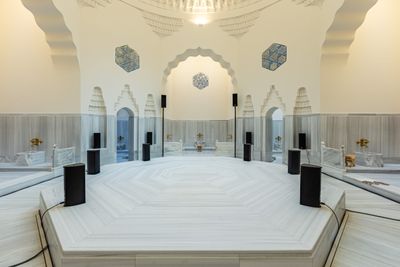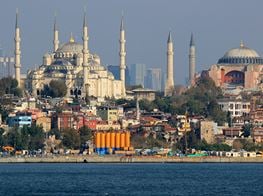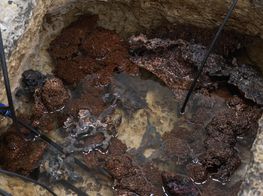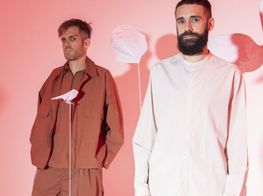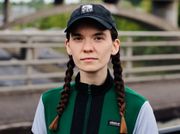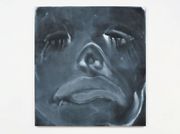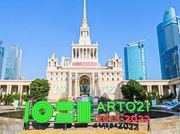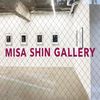Can the Istanbul Biennial Get Its Groove Back?

Marco Scotini and Can Altay, Disobedience Archive (2005–ongoing). Exhibition view: Merkez Rum Kız Lisesi, 17th Istanbul Biennial (17 September–20 November 2022). Courtesy Istanbul Biennial. Photo: Sahir Ugur Eren.
There was a time when the Istanbul Biennial felt like the centre of a post-Venice Biennale world. Where bold curatorial arrangements braiding conceptual, aesthetic, and formal propositions made charged political discourse accessible, while interrogating what exhibitions could do.
Throughout the 2010s, a momentum drove every edition, each building on the other to push forward a core inquiry: what can art do in times of upheaval, and how can art speak to diverse and divergent audiences in a changing world?
What Keeps Mankind Alive? in 2009, curated by collective What, How & for Whom (WHW), was a rallying call for a post-West imaginary. In 2011, Jens Hoffmann and Adriano Pedrosa's Untitled, a masterclass in exhibition design, was named after the candy piles from which Félix González-Torres invited viewers to pick as a metaphor for the material body.
Architect Ryue Nishizawa utilised corrugated metal to divide the Antrepo No. 3 warehouse into fractal segments, enabling artworks to stand on their own while remaining in concert. The result was a simple but effective proposal: let form speak for itself.
Then came Fulya Erdemci's 2013 edition, which took place on the heels of the Gezi Park uprisings. Like WHW, Erdemci deployed a question for a title, with Mom, am I barbarian?—drawn from poet Lale Müldür—prompting reconsiderations of barbarity at a time of civil unrest and battles for public space. Among the works, Halil Altındere's hip-hop video Wonderland (February 2013) (2013), saw Roma youth affected by redevelopment charge over Istanbul's Aqueduct of Valens.
Two years later, Carolyn Christov-Bakargiev pushed the Biennial's ongoing inquiry into art's efficacy as a mode of political and civil engagement to its limits. A sprawling, at times infuriating, but ultimately unforgettable show that spoke loudly in memory of the Armenian genocide on its centenary, still unrecognised by the Turkish state.
When an attempted coup against Erdoğan's regime in 2016 prompted political purges, Elmgreen & Dragset staged a subtle 2017 edition, whose title, a good neighbour, seemed to foreshadow Turkey's invasion of Northeast Syria in 2019. That year, Nicolas Bourriaud organised a show whose ecological focus, while timely, highlighted the rapidly shrinking space for confrontational, politically challenging exhibition-making that once defined this Biennial.
Cue the first Istanbul Biennial of the 2020s (17 September–20 November 2022), which has eschewed a title for the theme of composting—that is, creating the conditions to sow seeds as a metaphor for knowledge production and sharing. Even if an entire paragraph of the curatorial statement, written by co-curators Ute Meta Bauer, David Teh, and Amar Kanwar, appears across banners at the exhibition's 12 venues.
'Rather than being a great tree, laden with sweet, ripe fruit, this biennial seeks to learn from the birds' flight,' reads the statement-cum-title in part. How this translates curatorially is a show that resists formal cohesion, beginning with a scattering of sites located on the European and Asian sides of the city, hosting around 50 projects by 500 contributors.
At the Zeytinburnu Medicinal Plants Garden, Mariah Lookman has created a fountain around which musical performances take place, to the delight of park visitors. It's a full-bodied sensory experience, like Cooking Sections' transformation of Büyükdere35 in Beyoğlu into Wallowland (2022), a shop selling traditional buffalo milk pudding served with honey and sesame bread made by the baker across the street.
The Biennial excels at moments like these—when artworks activate mind, body, sense, space, and site at once. As is the case at the restored Ottoman-era Çinili Hamam. Taking advantage of the bath's division into two identical quarters, not to mention the architectural acoustics, one sound installation is installed on each side.
Renato Leotta's CONCERTINO per il mare (CONCERTINO for the sea) (2022) is a medley of wind instruments translating the anatomy of the Posidonia oceanica, a seagrass forming meadows in the Mediterranean Sea. While Taloi Havini's Answer to the Call (2021) is an auditory enmeshment of chanting from Buka Island, underwater recordings created on an oceanographic research vessel, and instrumentals by Bougainville musician Ben Hakalitz.
Superficially, they look the same, bar glass jars filled with leaves hidden in corners in Leotta's case, with speakers installed across each space—a curatorial masterstroke that utilises site to amplify the nuances of sonic form.
In the same Fatih neighbourhood, Tarek Atoui's Whispering Playground (2022) at Küçük Mustafa Paşa Hammam, a collaboration with a kindergarten, uses tubes dripping water on cymbals connected to microphones, vats, and buckets to translate the sounds of Istanbul's working harbours.
Sound is an important material across sites. Dictionary of Sensitive Sounds, initiated in 2019 by Evrim Kavcar and Elif Öner, presents sentences describing hyper-specific sonic situations in black text on a white screen on the ground floor of Performistanbul. In the basement, a video shows a performer ingeniously interpreting these moments—like that of your eyes opening and closing one early morning—through movement.
Performistanbul's compact space, with its sleek concrete walls, is an effective frame for Kavcar and Öner's conceptual project. Just as arthereistanbul, a grassroots organisation founded in 2014 by Syrian artists, is perfectly sited to host Footsteps, a library and reading room developed by journalist Çiğdem Öztürk and Syrian photographer Omar Berakdar, arthere's founder, to focus on testimonies of war.
In a corner nook sectioned off by Footstep's bookshelves, is Clapping with Stones (2005), a video by Lida Abdul showing men performing a mourning ritual for the destroyed Bamiyan Buddhas in Afghanistan. It's a succinct framing that balances object and archive within a vital community space that hosts people and cats in equal measure.
That setting contrasts heavily with the screening of two other videos by Abdul at the Pera Museum—In Transit (2008), showing students trying to turn a Russian military plane into a kite, and White House (2005), in which Abdul paints a ruined Afghan government building white—where they feel swallowed up by a density of archival presentations.
Archival and evidentiary displays are abundant across this Biennial, in fact; and each one is truly worth looking at. Like A Feminist Memory Project (2018–ongoing), with annotated materials from the Nepal Picture Library honouring women who have participated in Nepal's political struggles taking up one floor of the Pera Museum.
Or Nakamura Yuta's captivating display at Barin Han, Atatürk's Catafalque: Another Utopian Architecture? (2022), which maps historical links between Germany, Turkey, and Japan through the work of architect Bruno Taut, with a timeline of photographs, models, drawings, and notes displayed on a green wall.
But with no discernible consideration for a viewer's experience in terms of curatorial rhythm, most text-heavy and evidentiary presentations—like tables laden with objects and notations that need mental space to parse—have been placed in relentless chains, which does a disservice to the works and those around them.
One example is at Müze Gazhane. A trio of installations in one building begins with INLAND's Boğatepe Charter of Futures (2015–2022). Crammed into a small room are annotated shrubs lining one wall with a stunning animalesque tapestry hung on another. To one side, a trio of sheep masks and straw cloaks are positioned next to a small screen showing a video of figures performing in those costumes.
Numerous explanatory texts—three lengthy wall-leaning placards, one wall text, a hanging leaflet, plus an archival platform—contextualise the remarkable work INLAND is doing with the Boğatepe community in Eastern Anatolia to reinvent a dying rural culture. Efforts include turning one of the region's oldest dairies into an exhibition space, and organising cheese festivals, and symposia.
The Biennial excels at moments when artworks activate mind, body, sense, space, and site at once.
Yet the display falters in translating this complex vibrance—of a community in the process of its own remaking, and an art collective collaborating on that process—into a formal and spatial experience. Rather, it seems explanatory paragraphs are expected to do the job.
But this is an exhibition, not a textbook. Imagine projecting that video on a large screen in a dark space with amplified sound to activate this real-life conjuring; and staging those amazing costumes in a way that amplifies their roles as portals to a world in existence. (An exceptional example of how communities are brought to life curatorially is Salt Beyoğlu and Galata's current show on performance, The 90s Onstage.)
The issue with spacing extends to how works are placed in relation. Take Mining the Abyss (2022), which follows: a video investigating the impact of deep-sea mining by the research agency INTERPRT. It's a thorough piece of evidence against environmental injustice. But its placement—and monotonous info-heavy narration—fails to hold attention due to its position between a project that has already required deep reading, and what comes after.
State of Displacement: Entangled Topographies consist of videos, photographs, drawings, and writing assembled by two collectives—Arazi Assembly and Topological Atlas—who have created visual narratives around 'zones of dispossession' in the 'Global South' since 2017; here, fishing communities in Pakistan, women farming along the river Tigris, and undocumented migrants.
It's a meaningful amalgamation of objects and testimonies that at times feels difficult to parse, because at this point—three information-heavy displays in—mental overload kicks in.
It's an issue that arises, too, at the Central Greek High School for Girls, where Marco Scotini and Can Altay's Disobedience Archive (2005–ongoing) shows videos on smartphones and small screens lined up in rows on boards. Only here, that overload is sensory, with each video subsumed into an audiovisual spectacle.
While there are larger screens with more audible sounds and in some cases subtitles—among them, footage of the late Israeli intellectual Yeshayahu Leibowitz describing a 'judeo-nazi mentality' that, combined with documenta fifteen's recent issues, opens up a timely can of worms—you can barely hear, let alone ascertain what you're watching for the most part.
Amidst such densities, moments of formal and spatial clarity—like Ursula Biemann's two-channel video Vocal Cognitive Territory (2022) installed in a large darkened space at Müze Gazhane—feel like welcome sanctuaries.
Conceived as 'a sonic field of voices', Biemann's captivating documentary features Indigenous Inga community members, including Flora Marcas of the Inga Education Team, in their ancestral territory. They speak about establishing a 'pluriversity'—to preserve and protect Inga culture, connect with others, and honour indigeneity as a knowledge system with so much to teach the world about living with nature.
Vocal Cognitive Territory is an important anchor for this exhibition's conception of composting as knowledge production, even if it raises a broader issue around international biennials and artists drawing from indigeniety rather than giving space to indigenous creators themselves.
With that said, something else arises in light of this Biennial's theme of grounding, particularly given the understandable fact that, because of Covid-19, its curators were unable to spend too much time in the city while organising the show.
It's clear that the political situation in Turkey is having a profound effect on artistic expression and civic freedom (as is the case elsewhere). That fact is underscored with Dumpling Post, a Biennial project published by the Hrant Dink Foundation, founded in memory of the Turkish-Armenian journalist assassinated in Istanbul in 2007. The publication is named after a dumpling festival HDF staged when an academic conference it organised in 2019 was banned: an event that prompted a joyful, defiant, and communal stance against the violence of state censorship.
With that in mind, and thinking back to the critical, formal, and at-times tongue-in-cheek poetics that defined the Istanbul Biennials of the 2010s—a language into which art has often retreated out of political necessity—what might the 2024 Istanbul Biennial have to say if curators who came of age with those editions were given the lead? —[O]

